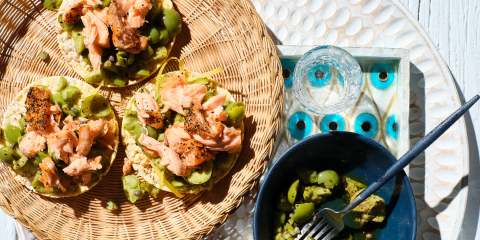Could You Be at Risk Of Iodine Deficiency?

Do you choose not to eat bread? What about milk, do you choose to drink soy, almond or other milk alternatives? Then you could be at risk of iodine deficiency. Why should you care? Iodine is important not only for foetal growth and normal development of tissues and the central nervous system which is why people planning or pregnant are recommended to consult with their GP as they may need iodine supplements to prevent lifelong learning disabilities or conditions in their child like Cretinism. Iodine has other important functions as it allows your thyroid to function normally which allows your body to produce energy and use oxygen in cell properly and overall gives you a normal metabolism. So, there are many reasons to get enough iodine in your diet.
What are the signs of not getting enough iodine? This can be as dramatic as a goitre which is the enlargement of your thyroid or other symptoms which include dry skin, fatigue and hair loss.
How much do you need? It is recommended anyone aged 14 years and over get 150 µg/day of iodine.
The top foods per 100g which include iodine are listed below:
1. Oysters 160 µg
2. Sushi (containing seaweed) 92 µg
3. Tinned salmon 60 µg
4. Bread (fortified with iodised salt) 46 µg
5. Steamed snapper 40 µg
6. Cheddar cheese 23 µg
7. Eggs 22 µg
8. Ice cream 21 µg
9. Chocolate milk 20 µg
10. Flavoured Yoghurt 16 µg
11. Regular milk 13 µg
12. Tinned tuna 10 µg
In Australia all breads are fortified with iodine because of the large percentage of the population seen to be at risk of iodine deficiency. If you eat bread (except organic bread and bread mixes available for bread making in your own home, which is not fortified with iodine) you need 3 slices to get your recommended amount of iodine. Unfortunately, most foods are low in iodine and the levels can further be affected by irrigation, soil and fertilisers. It will benefit your body to know what foods are higher in iodine to make sure you are allowing yourself to feel you have energy throughout the day not to mention the healthy skin and normal hair distribution.
To help make these iodine rich sources a delicious part of your day try adding to a pasta sauce, as part of a stir fry, as part of your breakfast e.g. choosing cow’s milk in your cereal or add as part of a snack such as Corn Thins slices topped with sliced boiled eggs, cucumber and tahini.
Take Home Message: If you choose not to have certain foods or drinks make sure you are including iodine in your diet through other food and drink forms, your health is worth this effort
References:
1. Mahan L.K., Stump S.E. (2004): Krause’s Food, Nutrition, & Diet Therapy, 11th Ed., Saunders, Pennsylvania.
2. Australian Government, (2005):Nutrient Reference Values for Australia and New Zealand, “Iodine”, pp: 181-185, accessed: http://www.nhmrc.gov.au/publications/synopses/_files/n35.pdf, 19/06/09.
(Updated link http://www.nrv.gov.au/, April 2014)
3. Food Standards Australia and New Zealand, (2009): Mandatory Iodine Fortification, accessed: 23/06/09, http://www.foodstandards.gov.au